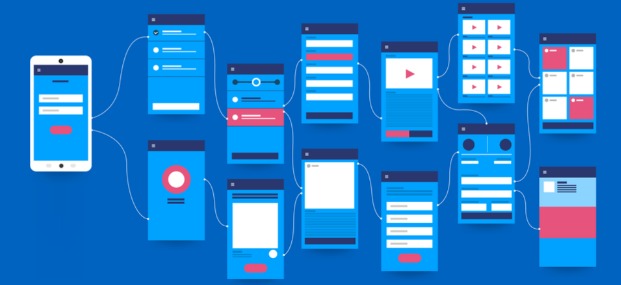The web design has evolved and established standards to ensure consistent and usable designs. Some of these rules were created simply because some of the website creators abused certain principles without regard to their users.
But these rules are not enforced by anyone and should be broken when necessary, especially when breaking them would lead to impressive web design like Instant Economic License. In this article, we introduce 10 rules that can be broken if they suit your design needs.
Rule # 1: Don’t show horizontal scroll bar
A significant number of mice do not have a horizontal wheel. This makes it difficult to scroll from left to right when the content of a web page extends beyond the sides of the browser. It can be annoying to have to move the cursor to the bottom of the window and drag the scroll bar again just to see one or two words that are beyond the visible area of the page.
Rule # 2: Use a minimum number of font
Too many sources generally conflict with each other and overwhelm the user. Each font has a personality, and many personalities can create a mess. To effectively use more than a couple of fonts, a design has to be very text-oriented, and the rest of the design has to be relatively quiet.
Rule # 3: Don’t use too many colors
The fear of going too far with a design is what separates professionals from novices. Sometimes they try to make designs as extreme as possible, with words on fire, blinking text, and as many colors as possible.
Some want to keep their designs subtle and pleasing to the eye, but in the end, their designs can sometimes seem lifeless.
Rule # 4: Make your site’s goal obvious
Something that really crowds the ears of young designers is that design should instantly tell viewers what they’re looking for before reading any text. Brand recognition is important for large companies, but sometimes you have to be a little smarter to get the viewer’s attention. Withholding information can arouse user curiosity and a desire to know more. Applying this technique to web design can greatly increase the time that users stay on your website.
Rule # 5: Navigation should be easy to figure out
Users must be able to find what they are looking for quickly. Sometimes engaging navigation can help the user feel connected to the site and what is being promoted.
Rule # 6: Use different colors for text and background
Many web designers are so afraid of making text illegible that they don’t realize they used the same color, both for the background and the font itself. You can follow some simple techniques to make similar colors work.
Rule # 7: Don’t put Animation in the way of your content
Seriously, don’t pop up small Flash ads right where the user is reading. The same goes for the survey boxes that are displayed every time the user is in the middle of a sentence. Users don’t like to be distracted when they’re in the middle of a sentence.
Rule # 8: Sources
Although the letter replacement techniques are still young, they are already making quite a stir.
Rule # 9: Landing page
Many designers have had the same discussion with their clients about why a landing page is not a good idea. Google tends to rank lower than this type of page and slow down the user to get the content they are looking for.
Read Also: How to Monitor Kids on Social Media Silently
Rule # 10: Don’t use tables
Any web designer who uses tables in their designs can instantly be called a novice by experienced designers. Tables don’t show the same thing in all browsers, and it can make your code look messy, but at least you’ll know what you’re getting with them.






































